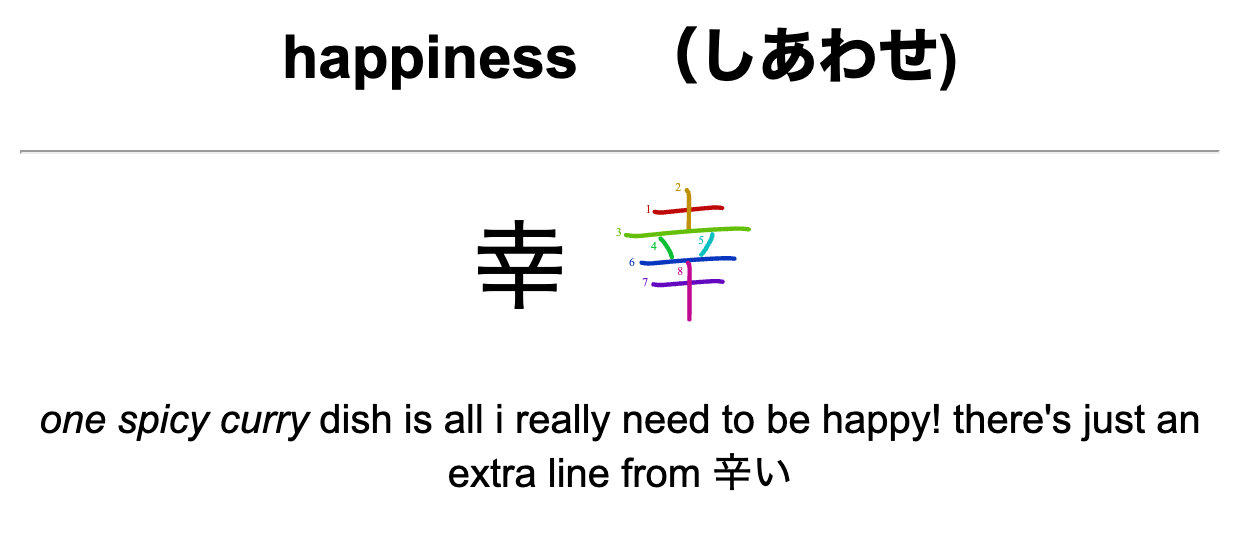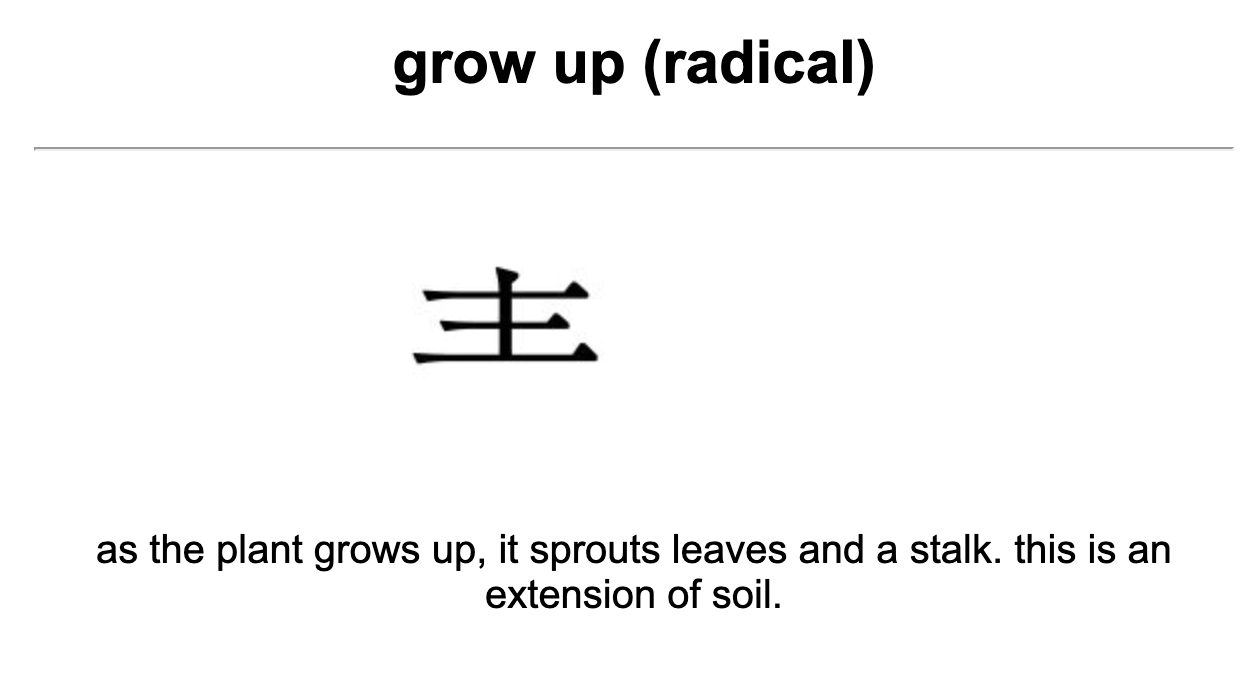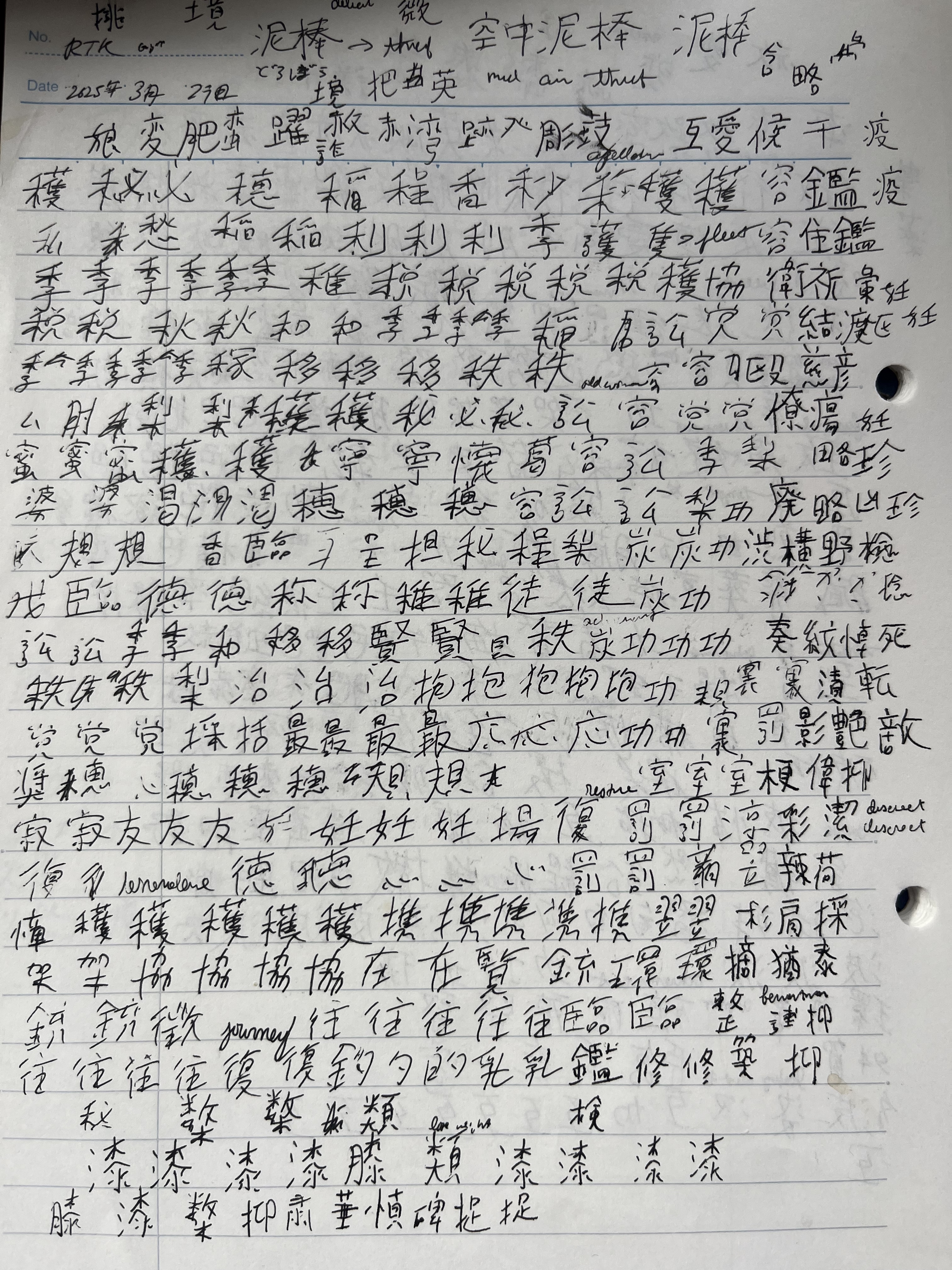I finally finished James Heisig’s “Remembering the Kanji” (RTK). RTK is a somewhat heterodox approach of teaching the 2220 Jōyō Kanji 常用漢字. RTK is learning how to recall a kanji from a keyword by remembering radicals creating helpful mneomnics involving the Kanji. There’s no readings or vocabulary taught in the process.
what I changed from the “stock” RTK
RTK is hard. A lot of the keywords Heisig are synonyms. Upon review, if I ran into troubling synonyms, I decided that rather than pull my hair out, I’d just make the cards a little easier by adding one of the readings I knew to the card, or a longer definition.


I also found it helpful to add radicals to the anki deck, something I didn’t see in other people’s decks. Many radicals Heisig uses are not Unicode characters and don’t render as anything logical, I found I could copy and paste a screenshot of the radical into the card, really helping here.

what I did wrong / learned along the way
- From kanji 1 to 30: I was convinced mnemonic were silly and I was too old for little stories. I was wrong.
- From kanji 1 to 100: I reviewed from kanji to keyword. This is wrong. Don’t do this. Heisig warns against this on several occasions. Production of a kanji from memory wires mental pathways in a way that simply remembering a keyword does not.
- From kanji 1 to 800: I didn’t set have the stroke order Anki extension set up on my deck. It’s helpful and reinforces stroke order link. I’d recommend it.
the routine
Each day, I woke up around 6:30am to first review previously added kanji. I’d then go add 22 new Anki cards to my deck. Reviewing past cards and creating new cards took roughly an hour each, and on weekdays I’d promptly leave for work when finished around 8:30am. On average 22 new cards per day consisted of around 20 kanji after subtracting the non Jōyō (and often non-Unicode) radicals. The whole process took around four months, starting in late January and finishing in May.
When reviewing, I used pen and paper to practice stroke order and writing the kanji. I found writing the kanji out really helped commit it to memory. Covering every page in the notebook with kanji scribblings felt like an accomplishment.

mnemonics
These are really important. At first they seemed silly to me, but they help a ton with memory. I pulled inspiration from my personal life and often from this site with mnemonics. Creating clever mnemonics was fun. The sillier and the more bizarre the mnemonic, the more likely I was able to remember it.
would I do it again?
I don’t know. I feel like when I was deep in the RTK process, I was picking up and cementing previously known kanji really well. Now that I’m done with RTK my memory feels a little sluggish, and some characters don’t come back so well. Nonetheless, I feel like it did wonders for my visual recognition of kanji, but it’s hard to say I wouldn’t have the same or better result from spending the two hours I spent on RTK each day just reading a novel for example.